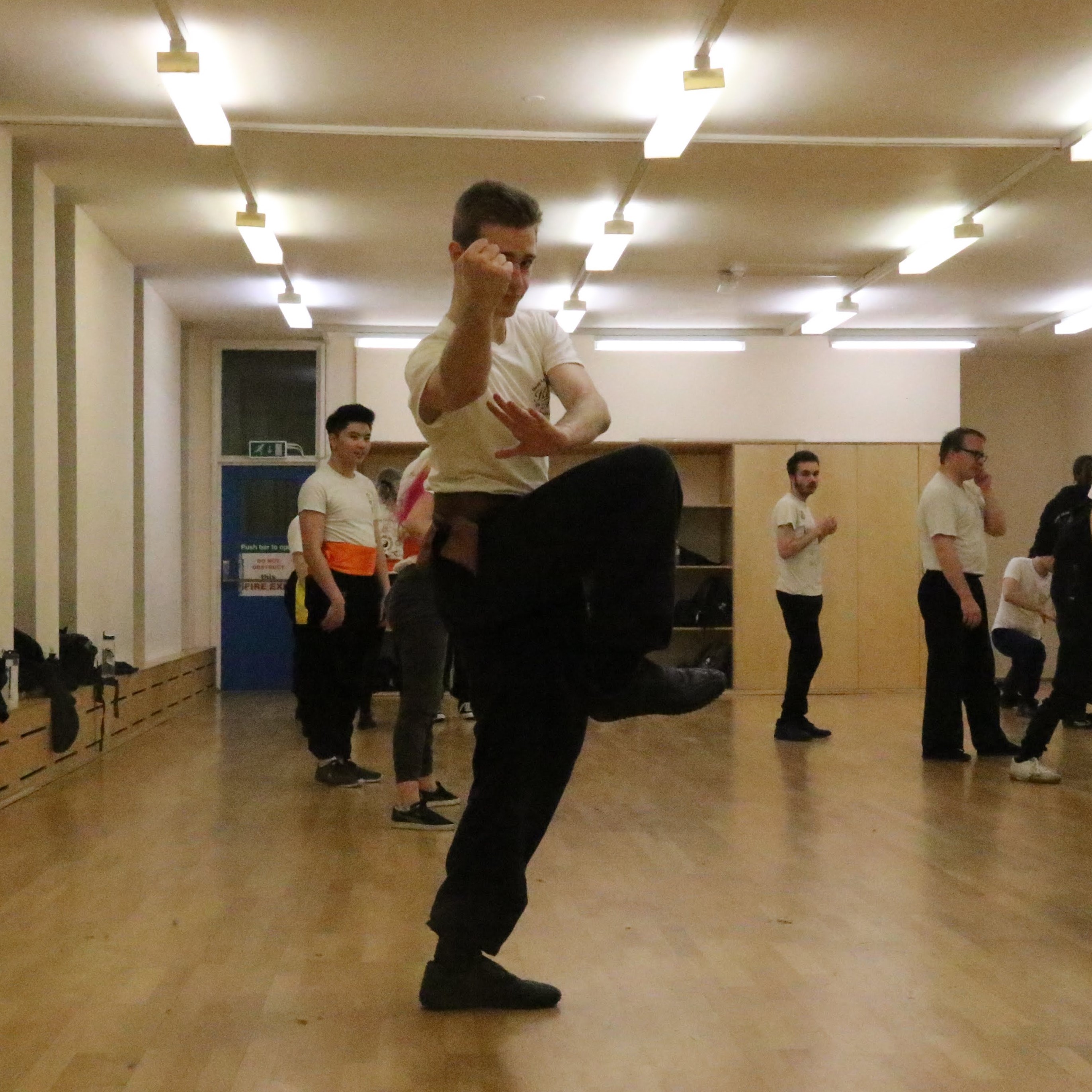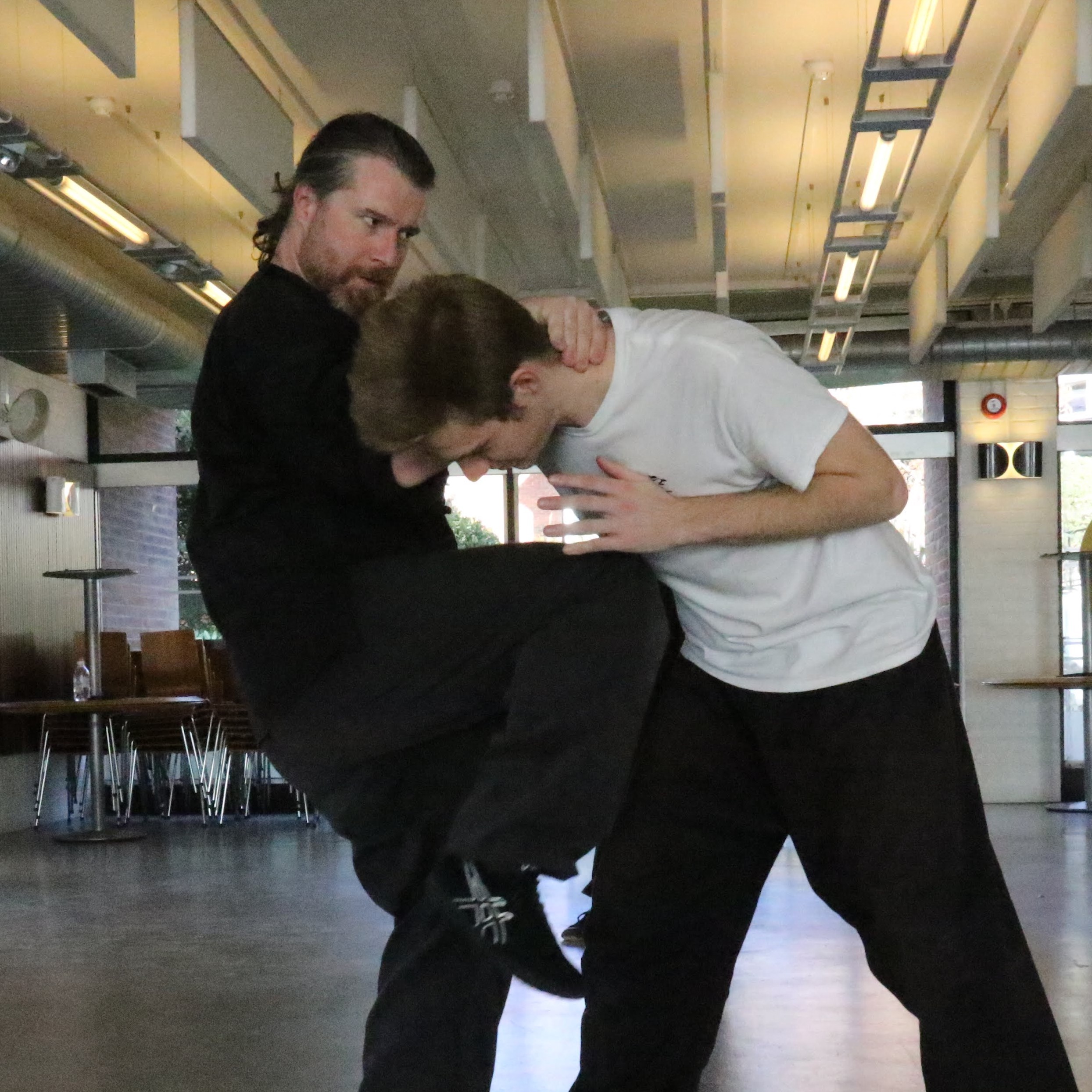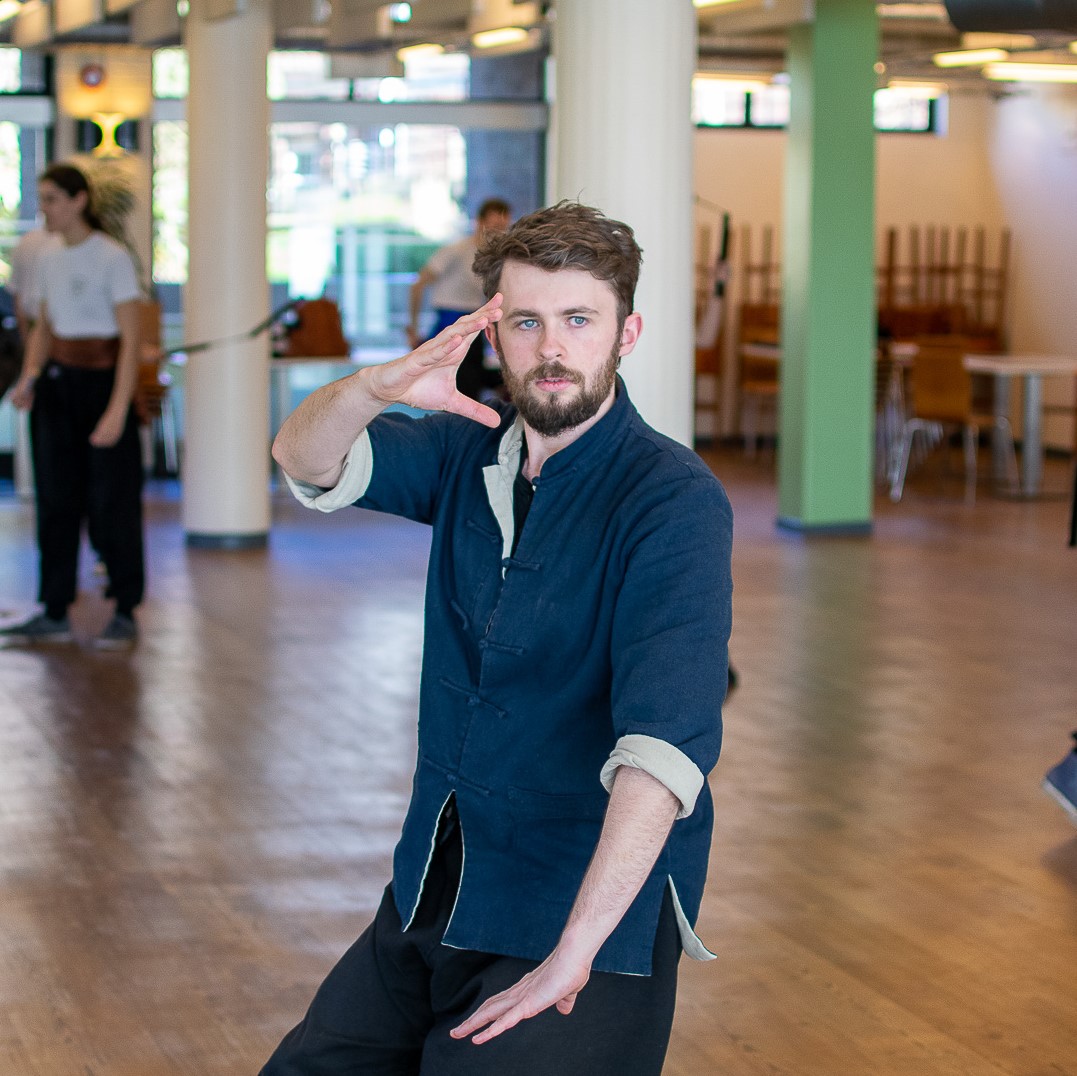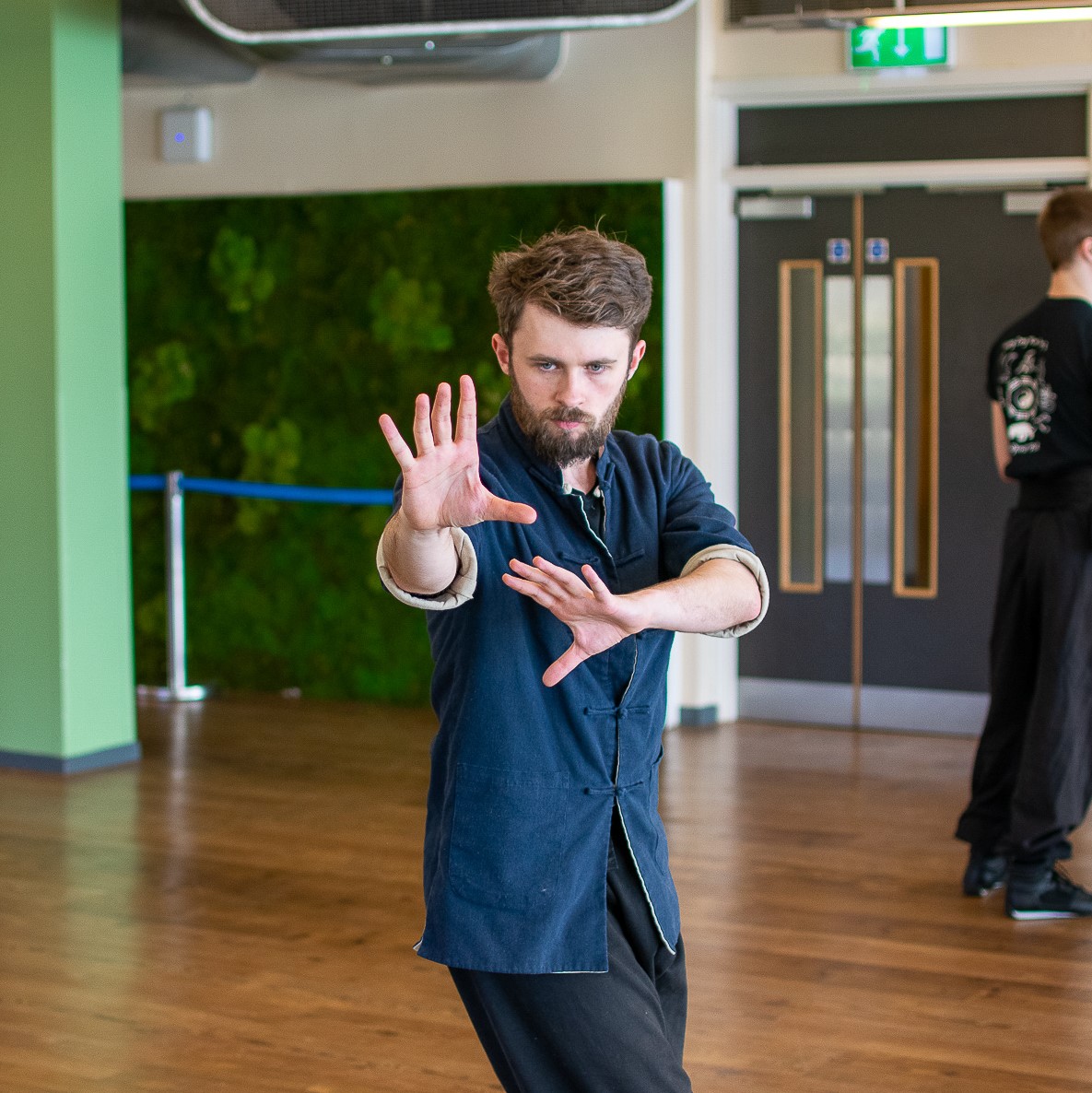Hung Leng Kuen Kung Fu - Influences
Introduction
This martial art above all else is focussed on self defence, we simply inherited the love of traditional Kung Fu from our founder. However, many people would not class our training as traditional. Forms, Tai Chi, Gradings and even Sparring, all exist to improve practical application. You will get the chance to pressure test all of your techniques to make sure they work. In time this becomes free sparring but for most people this begins more controlled until you become more experienced.
Sijo Dutton nor any of the instructors in Hung Leng Kuen claim to be masters of all of these styles listed below, this is simply an explaination of what styles were practiced by Sijo in his lifetime before he created Hung Leng Kuen.
Hung Leng Kuen has many influences and high among them are the following traditional animal styles. Based on each creature's characteristics and instinctive nature, they are combined with Hung Leng's other influences to create a balanced, elegant and lethal art.

Tiger - Hǔ Zhǎo Pài (Tiger Claw)
The Tiger is an animal of great character emphasising external force and power in its movements. Hung Leng Kuen practitioners value highly it's footwork and fighting stances. Techniques emphasise it's powerful open-handed blows; it's ripping, gouging, slashing and raking that are used to devour an opponent. Formations can represent the tiger claw, tiger paw and tiger mouth. "Nothing lives in the tiger's den."
Forms
Peaceful Tiger Fist, Tiger Descends The Mountain, Tiger and Crane Mixed Style Fist

Snake - Shé Quán (Snake Boxing)
Low-level stances, rapid attacking strikes and moves that imitate it's hypnotic poise, it's fangs and forked tongue are the characteristics of the snake. Hung Leng Kuen students practice the hooded Cobra's instinctive and lethal attacks on an opponent's most vulnerable areas with "Dim Mak" or "poison finger" techniques.
Forms
Poison Snake Darts Out

Monkey - Hóu Quán (Monkey Fist)
Rolling, falling, biting, jumping, gripping and throwing punches and kicks up from the ground are the hallmarks of these unrelenting, unpredictable, deceptively cheeky, agile, dexterous, intelligent and savage fighters. Comfortable with low-level defence and attack, monkey style uses the floor to full advantage. Related to the deceptively cheeky nature of the monkey, Hung Leng Kuen also incorporates the Drunken Fist (Zui Quan) into relaxed power generation and monkey-like agility.
Forms
Tiger Descends the Mountain, Monkey Offering Fruit

Crane - Báihè Quán (White Crane)
Intimidating and proud in it's stature, moves follow the white crane's grace and flow, the light, yet powerful, beating of its wings and the searing peck of it's long beak. Techniques used in Hung Leng Kuen consist of winged blocks and parries, winged thrusts and strikes, open and closed beak strikes and high crane kicks.
Forms
Tiger and Crane Mixed Style Fist

Mantis - Tángláng Quán (Praying Mantis Fist)
Martial artists have long valued the moves of the Praying Mantis. Formations follow it's forearms, pointed claws and powerful hooking grip. Fighting methods derived from the mantis are grasping, throwing, locking off and it's unique light footwork.
Forms
Praying Mantis Fist, Praying Mantis and Pheonix Eye Fist

Eagle - Yīng Zhǎo Pài (Eagle Claw Boxing)
Techniques of Hung Leng Kuen Kung Fu taken from the eagle include it's swooping, and the clawing and raking motions of it's ferocious talons. Pinpoint strikes, grabs, chokes, rips and tears focus at the weaker areas of the body such as the vital organs and pressure points.
Forms
Eagle Claw Boxing

Dragon - Lóng Quán (Dragon Fist)
The dragon represents a spiritual aspect of Hung Leng Kuen. Utilising the expanding, contracting, coiling and twisting motions of this mystical creature we can produce an array of techniques that include footwork, kicking, locking, clawing and striking. Fearless and terrifying, the dragon can control and obliterate it's opponents with ease.
Forms
Dragon Folds its Wings

Leopard - Hut Pao Tsut/Hei Bao Tzu (Black Leopard System)
Employing stances and attacks that resemble a playful kitten, the Black Leopard is anything but playful. Hut Pao Tsut (The Black Leopard System) was established in 1970 by Di Sifu Rostron and Sijo J.R. Dutton and places emphasis on the element of speed. The Black Leopard represents the highest level of art and the most ruthless form of self-defence. Pouncing, striking, throwing and immobilising with paw and claw, the Black Leopard System, or Hut Pao Tsut, is the principal influential animal system on Hung Leng Kuen, and provides our fighting spirit.
Forms
The Eight Form Fist of the Black Leopard System, Flowing Water

Shaolin
Seen as the focal point for Chinese martial arts, Shaolin kung fu is the most common and well-known style worldwide. Hung Leng Kuen embraces the strong stances and long-ranged combat tactics of Shaolin to build into a strong foundation in one’s training. Long ranged strikes, high kicks, deep stances and stable footwork are all iconic to Shaolin kung fu training, developing power, speed, flexibility and balance.
Forms
Shaolin Longfist

White Eyebrow - Bak Mei
Bak Mei (White Eyebrow Style), also colloquially known as ‘Traitor Style’, is a style known for it’s historical significance in Chinese martial arts culture. Employing short, explosive techniques in a destructive manner, Bak Mei generates a lot of close ranged power. This is often used in conjunction with the Phoenix Eye fist, a fist focussing on a single knuckle to minimise surface area for penetrating strikes.
Forms
Tong Long Phong Guan Kuen

Grand Ultimate Fist - Tai Chi Chuan
Tai Chi is one of the most popular health exercises in the world, but it originates from a potent and effective martial art. Tai Chi Chuan, or Grand Ultimate Fist, works on a principle of slow, controlled motion training the body to move fluidly and relax into every movement. This process benefits control over oneself and allows for the fast delivery of explosive and relaxed force. Mimicking the eb and flow of the iconic Tai Chi diagram, our Tai Chi Chuan teaches a student how counter an aggressive opponent through controlled redirection. Hung Leng Kuen trains a variant of the Yang style form, with the focus being on martial application and fighting skill.
Forms
Hung Leng Kuen Tai Chi Form (Adapted Yang Style)

Eight Trigram Palm - Ba Gua Zhang
Baguazhang, Pa Kua Chang, or Eight Trigram Palm, is a Daoist internal martial art focussing on circular footwork to flank an opponent. In Hung Leng Kuen, our bagua is most commonly linked with the aspect of the dragon, using twisting and coiling power to deliver open-hand strikes whilst using deceptive footwork to gain an advantage. The form is recognised by its circle walking, developing leg strength and stability to gain evasive footwork, and can be used to defend against multiple attackers.
Forms
Hung Leng Kuen Ba Gua Zhang Form

Weaponry
Hung Leng Kuen maintains its roots in traditional Chinese martial arts by training with weapons. Whilst accepting that in modern society the likelihood of getting into a sword fight is minimal, the training of weapons allows the student to understand body mechanics and fighting principles through a unique lens that can be translated back into their unarmed martial arts. We also practise self defence against armed opponents (knives, batons, etc.).
Forms
Spear Form, Sword Form, Double Sword Form, Flexible Weapon Form
Site created and maintined by Luke Jefferies © 2020 - any issues with the site let him know at [email protected]